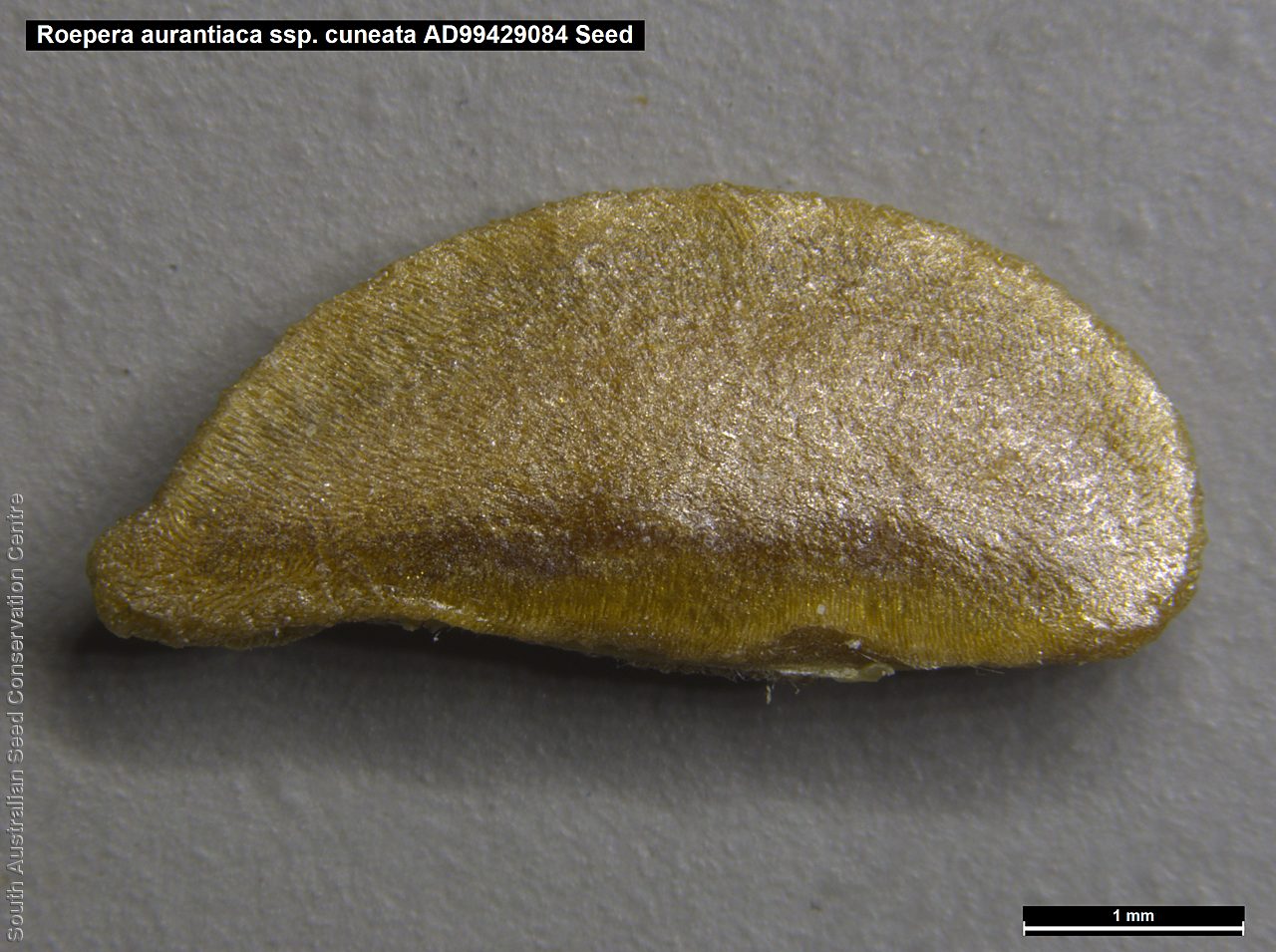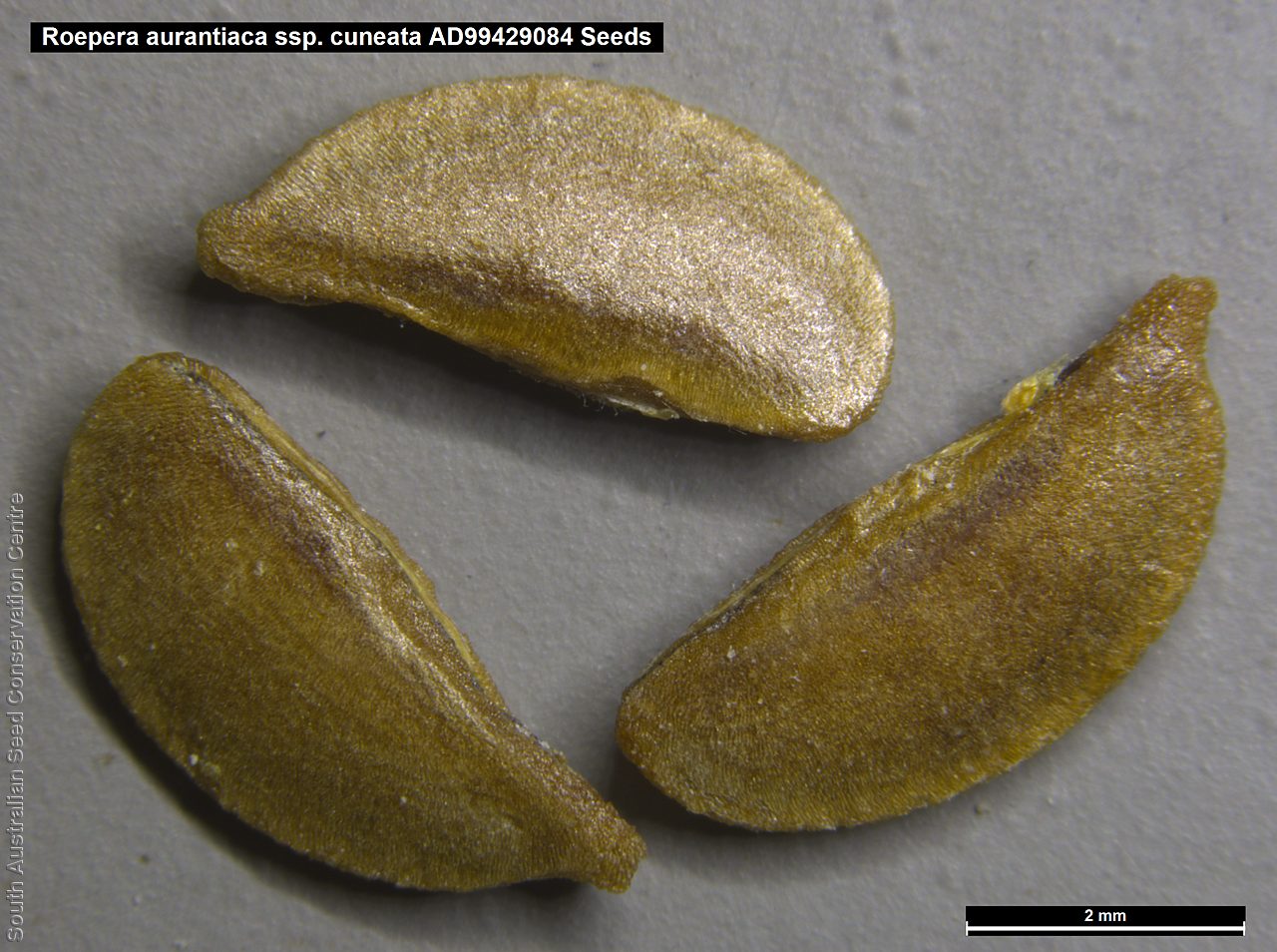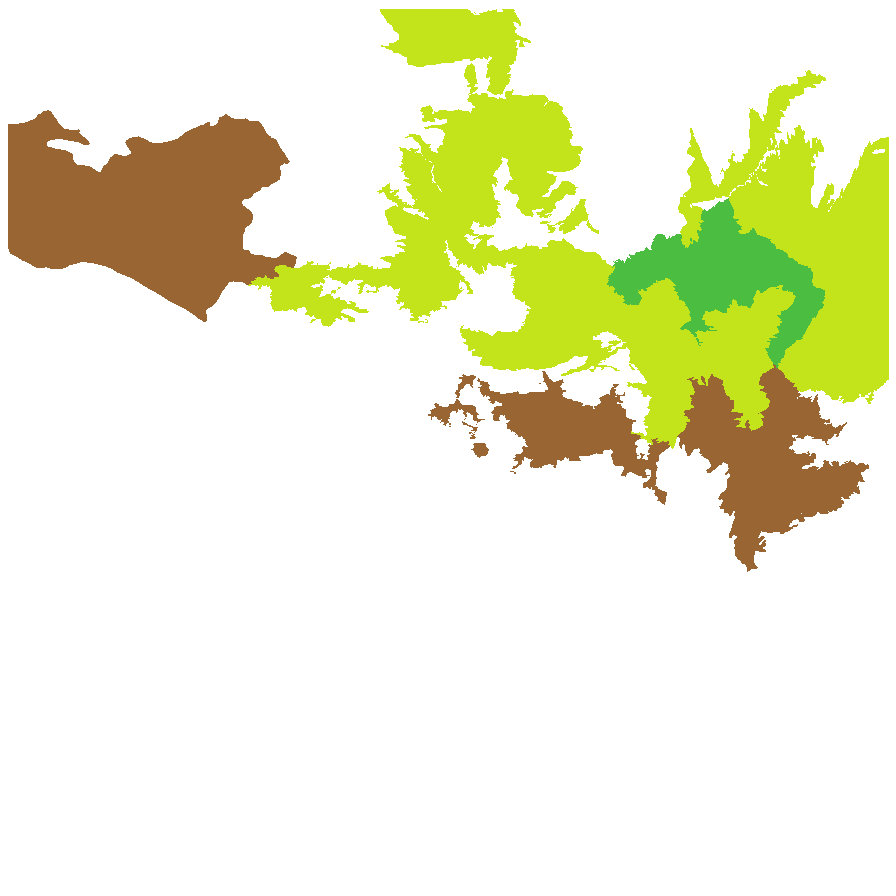



Prior names
Zygophyllum aurantiacum ssp. cuneatum
Common names
Cuneate Twinleaf
Shrubby Twinleaf
Etymology
Roepera (formally Zygophyllum which is from the Greek 'zygon' meaning pair and 'phyllon' meaning leaf; referring to the pair of leaflets making up each leaf) is named after Johannes August Christian Roeper (1801 -1885), a German botanist and physician. Aurantiaca from the Latin 'aurantiacus' meaning yellow-orange. Cuneatum from the Latin 'cuneum' meaning wedge; referring to the cuneate leaves with a shallowly bilobed apex which separate this subspecies from the other subspecies R. aurantiaca ssp. aurantiaca which has distinctly Y-shaped leaves.
Distribution and status
Endemic to South Australia and found in the Lake Eyre, Gairdner-Torrens and Flinders Ranges region, growing on limestone area or sand. Native. Uncommon in South Australia.
Herbarium regions: North Western, Lake Eyre, Gairdner-Torrens, Flinders Ranges, Eastern, Eyre Peninsula
NRM regions: Alinytjara Wilurara, Eyre Peninsula, South Australian Arid Lands
AVH map: SA distribution map (external link)
Plant description
A perennial, woody and bushy shrub that may grow to 1 m high and 1 m wide. Leaves are linear, fleshy and 'Y'-shaped with large yellow flowers. This subspecies differ from the other three subspecies found in South Australia, by the simple, cuneate leaves with a shallowly bilobed apex. Flowering between July and October. Fruits are yellow-brown round, four segmented capsule with paper wings. Seeds are orange-brown, wedge-shaped to 5 mm long and 2 mm wide. Seed embryo type is spatulate fully developed.
Seed collection and propagation
Collect seeds between October and February. Collect semi-dried and dried capsules by running your hands through the stems of the plant. Mature fruits will come off easily and will have a hard and dark seed inside each segment. Place the capsules in a tray and leave to dry for 1 to 2 weeks, depending on how green the fruit is. Then rub the dried capsules to dislodge the seeds. Use a sieve to remove the unwanted material. Store the seeds with a desiccant such as dried silica beads or dry rice, in an air tight container in a cool and dry place. Seed viability is usually high.